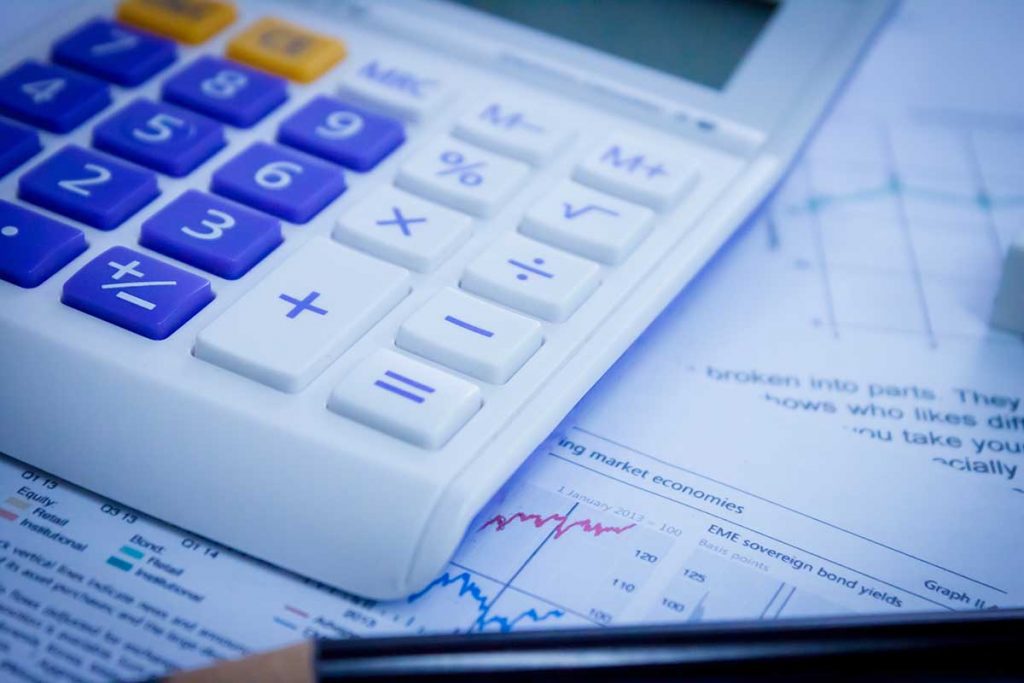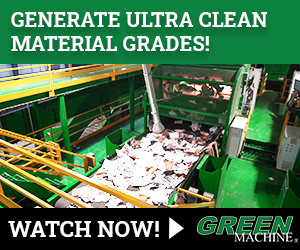
An editorial analysis examines whether OCC prices may foretell broader recession in the U.S. economy. | adison pangchai/Shutterstock
Forget peering into crystal balls or reading tea leaves. Maybe we should consult the mystical OCC price chart.
Some individuals with decades of recycling market experience have been telling me that recyclables prices offer clues about the trajectory of the economy.
Why is that? Recovered commodities are used in construction products (HDPE in piping), to make other goods (PET in carpet) or to package products (OCC in new boxes). These are products that generally get used more when times are good.
“If prices for those go down, it certainly implies some negative things for the economy,” said Chaz Miller, who conducts recycling markets analyses following a career in the U.S. EPA and multiple waste and recycling industry groups.
Recyclables may be trying to tell us something
First, let’s look more at recent pricing activity. In short, it has been a roller coaster with drops that push your stomach up into your throat.
Note: All of the numbers below were provided by RecyclingMarkets.net, which has surveyed recycling companies to track bale pricing for decades. The numbers are U.S. averages.
A year ago, in September 2021, OCC cost about $171 per ton. It slowly slipped over the following months, but, as of July 2022, it was still hovering around $130 per ton. Then it fell off a cliff, dropping to $114 in August and $78 in September.
Robert Boulanger, owner of RecyclingMarkets.net and a longtime observer of pricing trends around North America, told me the last time he saw a decline that steep was in the lead-up to the 2008-09 recession.
He recently gave me some numbers to illustrate: In September and October 2008, OCC was at $110 and $103, respectively. Then, in November 2008, when world leaders were in the throes of attempting to stave off a banking and housing market crisis that would eventually drag us into recession, the OCC price nose-dived to $23 per ton. And that’s where it stayed for quite some time. Boulanger noted that it took over a year for the OCC price to climb back to anything approaching that September 2008 level.
If consumers are anxious about their financial futures, they’ll slow down their discretionary spending, which means stores won’t sell as much, which means they expect that in coming months they’ll need fewer boxes, which means box makers won’t need as much OCC in the near term, which means less demand for bales, which puts downward pressure on prices.
The same general dynamic is at play with copper. That’s why the metal is nicknamed “Dr. Copper” – it’s used in so many different products that the copper price provides insight into the health of the entire economy. On that note, the doctor needs a doctor, because copper took a plunge starting this summer. In early June, the metal was trading on the London Metal Exchange for about $4.40 per pound, and late last week it was hovering around $3.30.
Recovered color HDPE and PET also serve as examples of how material pricing connects with wider economic trends.
Advanced Drainage Systems (ADS), a huge manufacturer of pipes, septic systems and other construction-type products, eats up a decent portion of all color HDPE bales generated by MRFs in the U.S.
A year ago, color HDPE was 58 cents per pound. The price then slid to about 29 cents in June. Since then – yep, you guessed it – it crashed down to today’s 6 cents. Boulanger said a similar thing happened at the start of the Great Recession: Color HDPE was 35 cents in October 2008, only to collapse to less than 7 cents the following month.
Meanwhile, PET is used to make carpet, fiber for clothes, strapping, and food and drink packaging. Recently, carpet stewardship group Carpet America Recovery Effort (CARE) noted that carpet sales in California had decreased, which is one of the reasons it’s asking consumers to pay dramatically higher fees starting in 2023 to cover carpet collection and recycling. If fewer homes are built because mortgage rates are rising or people are worried about their future income, then less new carpet is purchased, and carpet manufacturers such as Mohawk that use a lot of RPET in carpet face fiber consume fewer bales.
In fact, Mohawk touched on some of those dynamics in its earnings release in late July, noting that “as residential carpet volumes declined due to softening markets and inventory reductions, we are aligning capacity with demand.” The company noted that in the second quarter, major retailers all dramatically cut orders for carpet products “to reduce inventory as their sales forecasts weakened.”
As recently as May, RecyclingMarkets.net pegged RPET bales at nearly 40 cents per pound. The price is now less than 8 cents. In October 2008, PET bales sold for 17 cents per pound. The following month, they fell to 4 cents, and it took nearly a year and a half for the price to recover.
Why nothing – including the argument above – is as simple as it seems
Alright, everything I’ve said above comes with some important caveats.
First, Miller, who produces in-depth market reports for the Northeast Recycling Council (NERC), pointed out that recovered commodity pricing is affected by a number of factors. For example, PET values are altered by seasonal markets, with demand being high leading into the hot summer months, when we’re out and about and buying bottled water and soda.
OCC and paper markets are in a similar boat. Traditionally, demand for fiber wanes in November and December, because box makers have already purchased their feedstock and have cranked out the boxes needed for the holiday shopping season.
Still, Miller has some concerns. Purchasing agents are making orders based on projected demand for their products a month or two in advance, he noted. “If they’re retreating from the market, that’s their way of saying they’re not going to sell as much.”
Joe Pickard is the chief economist for the Institute of Scrap Recycling Industries (ISRI), and he recently presented during an ISRI press briefing. I asked Pickard what recycled material prices mean for our economic near-future. That was right after he got done running down a major list of macro economic indicators, including logistics costs, interest rates, currency valuations, geopolitical uncertainty and a lot more.
He acknowledged that many reporters look at copper as an economic indicator, but he also said the relationship only goes so far. “I think there’s probably a little too much attention focused on the volatility in commodity prices, especially these days, as an indicator of a recession,” he said.
And he generally doesn’t put too much stock in looking at one particular commodity as an indicator of a looming recession.
He then pointed out that we’re living in some wacky economic times (my words, not his) coming out of COVID. Unemployment is low, and the labor market is continuing to add jobs. At the same time, as was just underscored by the $18 sandwich (with tip) I just bought for lunch, inflation is hot.
“There are some real bright spots within the economy, and I think the volatility that we’re seeing in some of the prices these days has more to do with global economic jitters, in addition to rising interest rates,” Pickard noted.
Of course, there are indicators we’re already in a recession. Feds with calculators estimated that the U.S. economy shrank during the first and second quarters, which aligns with a long-held informal definition of a recession as two straight quarters of declining economic activity, according to an AP News explainer from two weeks ago.
If that’s the case, the mystical OCC price may not be indicating we’re headed for recession as much as it’s warning that we’re destined for tougher times than we’re now experiencing.
Jared Paben is the associate editor of Resource Recycling and can be contacted at [email protected].
More stories about markets
- ‘Operational readiness is high’ as Oregon rolls out EPR
- Pizza box demand declining, report says
- Paper operations close in Georgia, Texas



